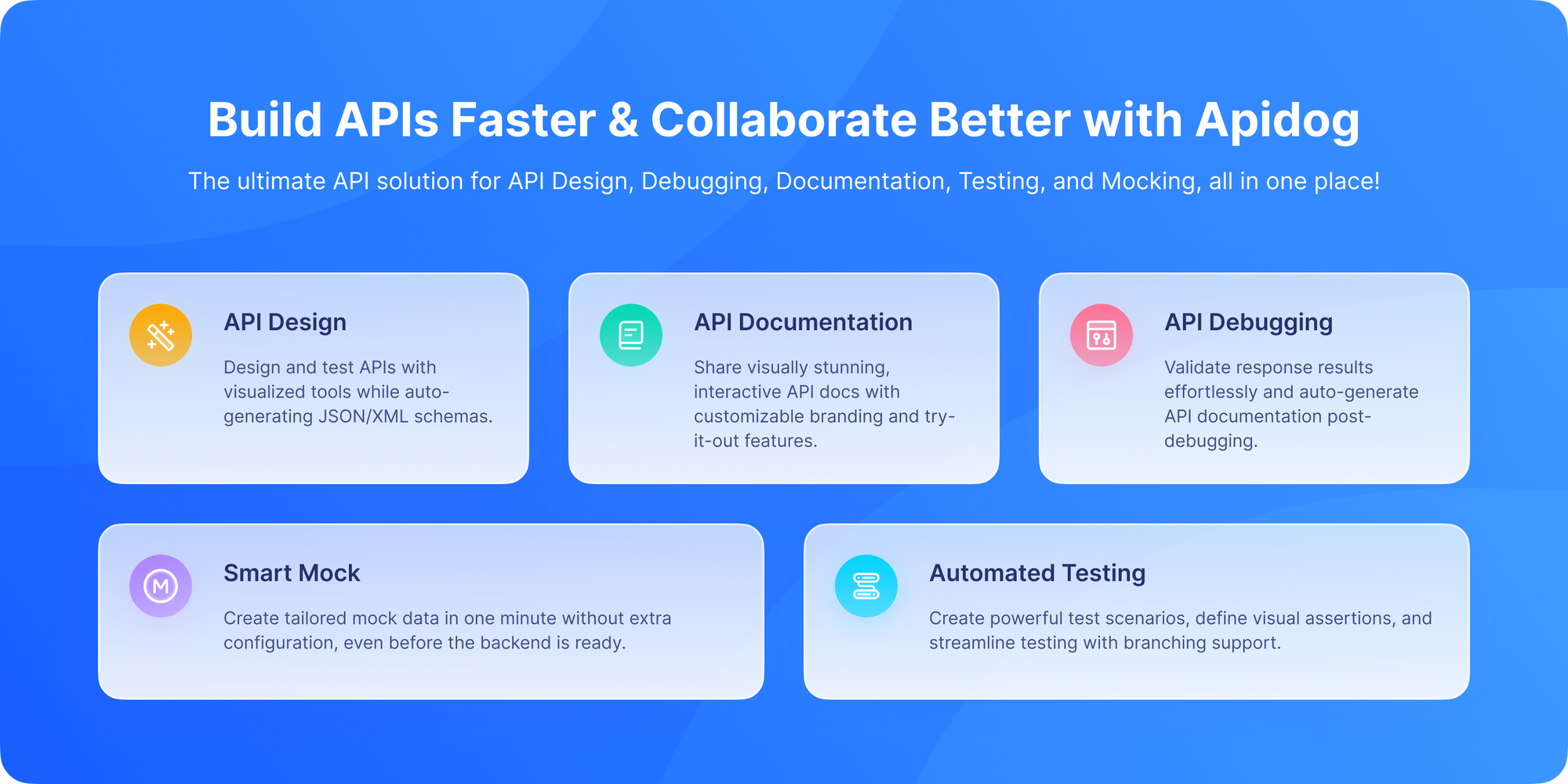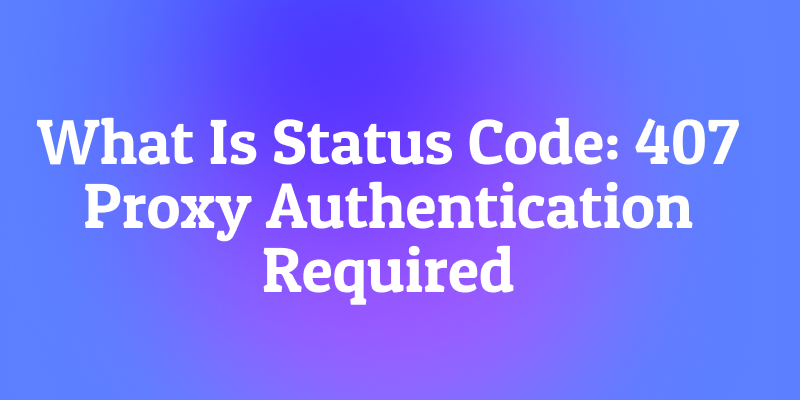You're sitting at your desk in a large corporate office, trying to access a website. Your browser spins for a moment, and then you get a surprising login prompt but not from the website you were trying to visit. This one says "Proxy Server Authentication" and asks for your network credentials. What you've just encountered is one of the more specialized HTTP status codes: 407 Proxy Authentication Required.
This code operates one step earlier in the web request journey than the more familiar 401 Unauthorized. While 401 comes from the destination website, 407 comes from an intermediary the proxy server that stands between you and the open internet.
It's the digital equivalent of getting past the building security guard (407) only to then meet the specific office manager (401) at your destination. Both need to verify your identity, but they serve different purposes in the chain of access.
If you work in a corporate environment or develop applications that need to navigate through proxy servers, understanding the 407 status code is crucial.
In this detailed blog post, we'll explain what HTTP 407 Proxy Authentication Required means, why it occurs, how it fits into the proxy authentication process, and practical ways to handle it effectively.
Furthermore, if you want to test APIs involving authentication, including proxy interactions resulting in 407 responses, try Apidog for free.
Apidog is a powerful and intuitive API testing and documentation tool that helps you better understand HTTP responses like 407, diagnose issues, and improve your API development workflow. If you've ever been stuck scratching your head about a proxy error, Apidog can save you hours of frustration.
Now, let's explore the world of proxy authentication and the HTTP 407 status code.
The Corporate Firewall: Understanding the Proxy Server
To understand 407, we first need to understand what a proxy server is and why organizations use them.
A proxy server acts as an intermediary between your computer and the wider internet. Think of it as a security checkpoint or a concierge service for all web traffic. Companies use proxies for several reasons:
- Security: To scan incoming traffic for malware and block malicious websites
- Caching: To store frequently accessed content locally, speeding up load times
- Monitoring: To track and log employee internet usage
- Content Filtering: To block access to inappropriate or non-work-related sites
- Bandwidth Control: To manage and optimize network traffic
In many corporate networks, all web traffic must pass through the proxy server. This is where the 407 status code comes into play.
What Does HTTP 407 Proxy Authentication Required Actually Mean?
The 407 Proxy Authentication Required status code indicates that the client must first authenticate itself with the proxy before the request can be forwarded to the destination server.
The key difference from 401 Unauthorized is who's asking for authentication:
401comes from the destination server (e.g., google.com, your SaaS application)407comes from the proxy server (e.g., your company's network gateway)
A proper 407 response includes a Proxy-Authenticate header, which tells the client how to authenticate with the proxy.
A typical 407 response looks like this:
HTTP/1.1 407 Proxy Authentication RequiredProxy-Authenticate: Basic realm="Corporate Proxy Server"Content-Length: 0
Let's break down the crucial component:
Proxy-Authenticate: Basic realm="Corporate Proxy Server": This is the proxy's instruction to the client.Basic: The authentication scheme. This is the same "Basic" auth we see in401responses, where credentials are base64-encoded.realm="Corporate Proxy Server": A description that helps the user understand what they're authenticating to.
Common Causes of a 407 Response
Here are some reasons you’ll see 407 Proxy Authentication Required:
- Proxy requires credentials → But none were provided.
- Invalid credentials → Wrong username/password or expired token.
- Proxy misconfiguration → Server expects authentication, but client isn’t configured to send it.
- Network policies → Enterprise or cloud networks often enforce proxy auth.
- Custom security layers → Extra authentication requirements beyond standard proxies.
The Role of the Proxy-Authenticate Header
When a proxy returns 407, it also sends a Proxy-Authenticate header.
Example:
Proxy-Authenticate: Basic realm="Proxy"
This tells the client:
- Which authentication scheme to use (e.g., Basic, Digest, NTLM, Kerberos).
- The realm or context of authentication.
The Role of Proxy Servers and Why Authentication Is Needed
Proxies act as intermediaries between clients and servers. Organizations or individuals often use proxies to:
- Enforce access control and security policies
- Monitor or filter outgoing web traffic
- Improve performance via caching
- Hide internal network structures
- Provide anonymity or content restriction management
To ensure only authorized clients use these services, proxies can require authentication before passing requests along.
The Network Journey: How 407 Works in Practice
Let's follow a web request through a corporate network that requires proxy authentication.
Step 1: The Initial Request
Your browser tries to access https://example.com. However, your computer's network settings are configured to use a proxy server at proxy.corporation.com:8080. The browser sends the request to the proxy instead of directly to example.com.
GET <https://example.com/> HTTP/1.1Host: example.com
Step 2: The Proxy's 407 Challenge
The proxy server receives the request. It checks whether the client has provided valid proxy credentials. Since this is the first request, there are no credentials. The proxy responds with a 407 status.
HTTP/1.1 407 Proxy Authentication RequiredProxy-Authenticate: Basic realm="Corporate Proxy Server"
Step 3: The Client Retries with Proxy Credentials
Your browser sees the 407 response and the Proxy-Authenticate header. It prompts you for proxy credentials (usually your corporate username and password). It then encodes these credentials and adds a Proxy-Authorization header to a new request.
GET <https://example.com/> HTTP/1.1Host: example.comProxy-Authorization: Basic dXNlcm5hbWU6cGFzc3dvcmQ=
(The string dXNlcm5hbWU6cGFzc3dvcmQ= is the base64 encoding of username:password)
Step 4: The Proxy Forwards the Request
The proxy server validates the credentials in the Proxy-Authorization header. If they're correct, it forwards the request to the actual destination server (example.com). The proxy strips out the Proxy-Authorization header before forwarding, so your corporate credentials don't get sent to the external website.
Step 5: Potential Further Authentication
The destination server (example.com) might itself require authentication and respond with a 401 Unauthorized. Your browser would then need to handle that separately.
407 vs. 401: The Critical Distinction
This is the most important comparison to understand. Both deal with authentication, but at different layers.
| Feature | 401 Unauthorized |
407 Proxy Authentication Required |
|---|---|---|
| Who Sends It? | The destination server (the website you're trying to access) | The proxy server (the intermediary between you and the internet) |
| Authentication Header | Uses WWW-Authenticate to challenge |
Uses Proxy-Authenticate to challenge |
| Authorization Header | Client uses Authorization header |
Client uses Proxy-Authorization header |
| Analogy | The office manager at your destination asking for your appointment credentials | The security guard at the building entrance checking your ID |
The key insight: A single request might need to pass through both a 407 challenge (from the proxy) and a 401 challenge (from the destination server). They are not mutually exclusive.
Common Scenarios Where You'll Encounter 407
1. Corporate and Educational Networks
This is the most common scenario. Large organizations use authenticated proxies to control and monitor internet access. Employees and students must authenticate with their organizational credentials.
2. Paid or Premium Proxy Services
Some proxy services (like certain VPNs or web scraping proxies) require authentication to ensure only paying customers can use their infrastructure.
3. Library and Public WiFi Networks
Some public networks use proxy authentication to track usage or enforce time limits, even if the service is free.
4. Application-Level Proxies
Some applications (like mobile apps or desktop software) might be configured to use a proxy that requires authentication, especially in enterprise environments.
Real-World Examples of 407 in Action
Example 1: cURL Request Without Proxy Auth
curl -x <http://proxy.example.com:8080> <https://api.example.com/data>
Response:
HTTP/1.1 407 Proxy Authentication Required
Proxy-Authenticate: Basic realm="Proxy"
Example 2: Adding Proxy Credentials
curl -x <http://user:password@proxy.example.com:8080> <https://api.example.com/data>
This time, the proxy allows the request to pass through.
How to Handle 407 Errors as a User or Developer
If you encounter a 407 error:
- Provide proxy credentials: Ensure your browser or client is configured with the correct username and password.
- Set proxy authentication headers: Many programming environments require explicit configuration to send
Proxy-Authorizationheaders. - Verify authentication scheme: Check if your proxy uses Basic, Digest, or another method and configure clients accordingly.
- Use authenticated proxy settings in tools: In API clients like Postman or Apidog, supply proxy credentials correctly.
- Confirm network and proxy settings: Use system settings to verify proxy authentication requirements.
407 and Authentication Schemes
Proxies may support different auth schemes:
- Basic Authentication → Username + password, Base64 encoded.
- Digest Authentication → More secure, involves hashing.
- NTLM/Kerberos → Often used in Windows-based enterprise networks.
Understanding the scheme is key to sending the right credentials.
Configuring APIs and Clients for Proxy Authentication
Developers must:
- Implement support for sending
Proxy-Authorizationheaders. - React to 407 responses by prompting for credentials or retrying with credentials.
- Handle different proxy authentication schemes.
- Test proxies to ensure correct handling of authentication flows.
Testing Proxy Authentication with Apidog

Testing applications that need to work through authenticated proxies can be challenging. Apidog provides powerful features to simulate and test these scenarios.
With Apidog, you can:
- Configure Proxy Settings: Set up proxy server details directly in Apidog, including host, port, and authentication credentials.
- Test Without Proxy: First, test your API endpoints without a proxy to establish a baseline and ensure they work in a direct connection.
- Test With Proxy Authentication: Configure Apidog to route requests through your test proxy server. If the proxy requires authentication, Apidog can automatically handle the
407challenge and include theProxy-Authorizationheader in subsequent requests. - Debug Complex Flows: Use Apidog's detailed logging to see the entire request/response chain, including the initial
407challenge and the subsequent authenticated request. - Simulate Different Proxy Scenarios: Create different environments in Apidog for testing with various proxy configurations (corporate proxy, no proxy, different authentication types).
This is particularly valuable for developers building applications that need to work reliably in corporate environments where proxy authentication is mandatory. Instead of wasting hours on trial-and-error, Apidog makes it crystal clear what’s happening. Download Apidog for free to make your proxy authentication testing efficient and error-free.
Security Considerations and Best Practices
For Network Administrators:
- Use Secure Authentication Schemes: While
Basicauth is common, consider more secure schemes if your proxy supports them.Basicauth sends credentials in easily decodable base64. - Combine with HTTPS: Ensure that proxy authentication happens over encrypted connections to prevent credential sniffing.
- Clear Communication: Make sure users understand why they're being prompted for proxy credentials and what realm they're authenticating to.
For Application Developers:
- Handle 407 Gracefully: If your application encounters a
407response, provide clear guidance to the user about what's happening. Don't just show a generic "authentication failed" error. - Support Proxy Configuration: Allow users to configure proxy settings (including authentication) in your application, especially for enterprise software.
- Credential Security: If you store proxy credentials, ensure they're stored securely using proper encryption.
SEO Implications of 407 Errors
For APIs, SEO isn’t usually relevant.
But if your public-facing site is behind a proxy and responds with 407:
- Crawlers like Googlebot won’t be able to index your pages.
- That can hurt your visibility in search results.
What Happens If Proxy Authentication Fails?
- The client keeps receiving 407 responses.
- Access to requested resources is blocked.
- Unauthorized users cannot use the proxy services.
Proper error handling improves user feedback and troubleshooting effectiveness.
Troubleshooting Common 407 Issues
If you're frequently encountering 407 errors:
- Check Your Network Settings: Verify that your system is configured to use the correct proxy server.
- Verify Your Credentials: Ensure you're using the correct username and password for the proxy. These are often different from your other system credentials.
- Check Certificate Issues: Some authenticated proxies use SSL inspection, which might require you to install the proxy's root certificate.
- Contact IT Support: In corporate environments, proxy issues are often best handled by your IT department, as they control the proxy configuration.
Conclusion: The Invisible Gatekeeper
The HTTP 407 Proxy Authentication Required status code represents an important layer of enterprise network security. While most consumers on home networks will never encounter it, it's a daily reality for millions of corporate and educational users. The 407 Proxy Authentication Required error may look intimidating, but at its core, it’s just the proxy server doing its job: making sure you’re authenticated before passing requests along.
Understanding how 407 works and how it differs from the more common 401is crucial for developers building applications that need to function in restricted network environments. It's a reminder that web requests often pass through multiple checkpoints before reaching their final destination.
By properly handling 407 responses and providing clear proxy configuration options, you can ensure your applications work seamlessly wherever they're deployed. And when you need to test these complex authentication flows, a comprehensive tool like Apidog provides the necessary features to ensure your applications can navigate through proxy authentication challenges successfully.
For seamless API testing involving proxies and authentication flows, be sure to download Apidog for free. Apidog equips you with insightful tools to analyze and debug HTTP responses, including tricky proxy-related status codes like 407.



